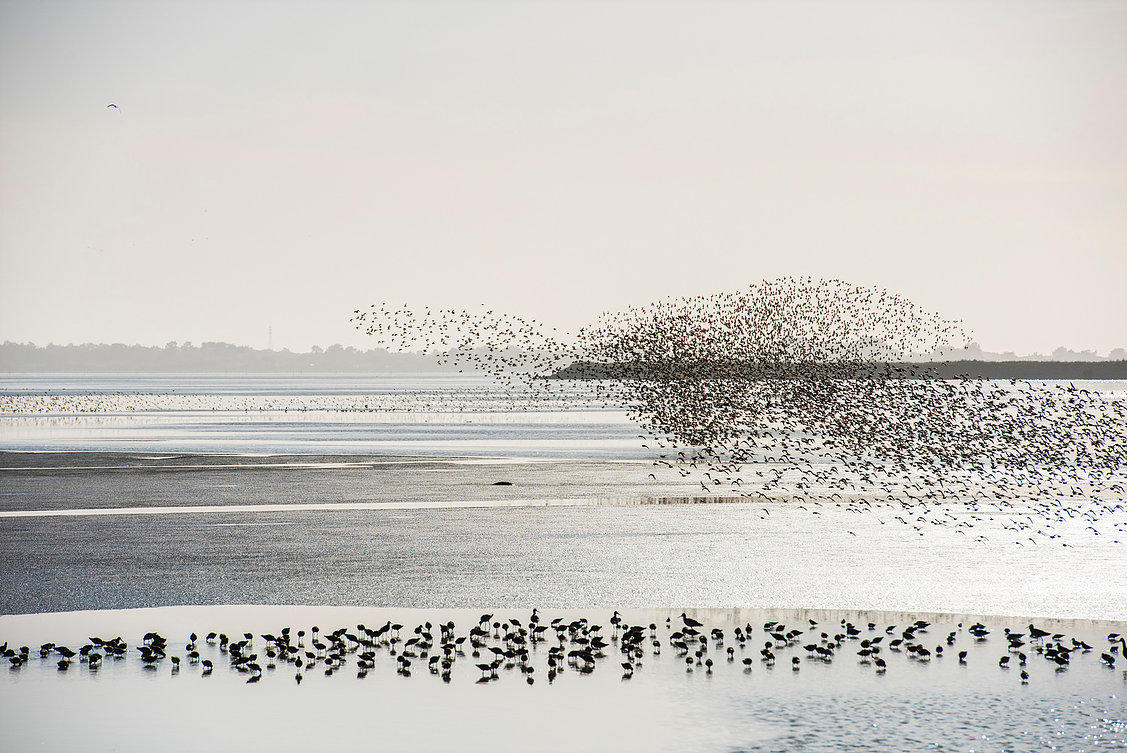
Though small – less than 10 percent the size of San Francisco Bay – Humboldt Bay is one of the top spots for shorebirds and waterbirds on the Pacific flyway. Now, the same local agency that recently promoted a massive expansion of shellfish farms into the bay’s eelgrass beds, has unveiled its own proposal to develop into the most important habitat for birds in the bay. This comes despite years of warnings from Audubon California, wildlife agencies, hunters, and local residents to avoid these prime bird habitat areas for shellfish farm development.
We’re going to need your help in blocking this terrible proposal.
A quirk in state law dating back to the 1970s gives the Humboldt Harbor, Recreation and Conservation District authority as lead agency for shellfish permitting in the bay. In the rest of the state, the Fish and Game Commission has this authority, and has not issued any new intertidal aquaculture leases in over 30 years, reflecting the importance of intertidal habitats to wildlife, ecosystem processes and coastal protection. These habitats are far more vulnerable in Humboldt Bay, which hosts over 30 percent of all the state’s precious eelgrass beds.
Recently, the Harbor District has used this loophole to promote projects in the heart of sensitive bird habitat and eelgrass beds in the bay. Audubon California led an 18-month campaign to stop the expansion of shellfish farms into eelgrass beds, and the California Coastal Commission responded in 2017 by not only rejecting any expansion of shellfish farms, but shrinking the size and consolidating existing operations to reduce disturbance to birds and other wildlife.
The area now being targeted for new shellfish farms is a core part of the intertidal mosaic comprised of patchy eelgrass, mudflat, and tidal channel. These diverse and productive bird habitats are part of the reason the bay will be likely in the coming several months be formally upgraded to a shorebird area of hemispheric importance by the Western Hemisphere Shorebird Reserve Network. Not only does the bay hold among the highest abundances of shorebirds on the Flyway, it has the highest species diversity, and is essential for sensitive or imperiled bird species including U.S. Fish & Wildlife Service Focal Species Black Brant, Long-billed Curlew, and Marbled Godwit. The bay hosts up to 60 percent of Pacific Black Brant, a California Species of Special Concern, which depends on the bay’s eelgrass beds and quiet intertidal areas to rest and feed as they move between Alaska and Mexico.
Poorly sited and sized shellfish farms are bad for birds because they destroy eelgrass, displace birds from intertidal areas, and increase the amount of disturbance in the bay. All these impacts hurt birds that need to refuel and rest on their long journeys on the Flyway.
Audubon California supports properly sited and sized aquaculture in California. However, the Harbor District has rejected the in-depth analysis recently provided by Audubon scientists, which identified areas of the bay that are excellent for growing shellfish, yet avoid the most important areas for birds. We’ll be enlisting our network to help advocate for a better outcome in Humboldt Bay in the near future.
By Anna Weinstein
Monthly Giving
Our monthly giving program offers the peace of mind that you’re doing your part every day.




